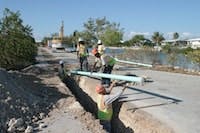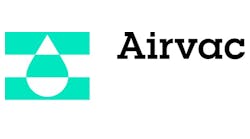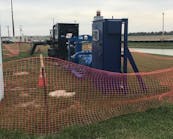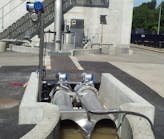Ernest Hemingway, a former resident of the Florida Keys, knew he was living in paradise when he wrote, "It’s the best place I’ve ever been anytime, anywhere–flowers, tamarind trees, guava trees, coconut palms.”
Today, more than 3 million visitors come to the Keys each year to enjoy the beauty and lifestyle that Hemingway found so appealing. Tourism is the No. 1 industry on the archipelago. Visitors come for sun, scuba, sailing and scenery. Many visitors become permanent residents.
The influx of people and burgeoning economy has come at a price for the Keys. In the 1980s, it was discovered that pollution, largely from wastewater, had reached dangerous levels. The magnificent coral reefs and marine life, which are the foundation of the region’s tourism industry, were in jeopardy. Tropical and game fish were endangered and some bodies of water became unsafe for swimming. Residents, as well as local and state officials, began to realize that a great natural resource would disintegrate unless they addressed their need for proper wastewater management.
In 2000, the Florida State Legislature mandated that the Keys have a suitable sewer system and treatment facilities, including nitrogen and phosphorous removal, in place by the middle of 2010.
“The reefs here are incredible,” said Chuck Fishburn, general manager of the Key Largo Wastewater Treatment District. “Virtually everyone who is here came here because of the water, the fishing, diving and boating. We understood that if we didn’t get central sewers, we would eventually kill off the reason we’re here.”
Getting Busy
The Florida Keys encompass a large geographic area, approximately 137 sq miles covering 17,000 islands. More than 80,000 people live in the Keys, and an estimated 4 million tourists visit the islands each year. Providing sewer service to such a large area and involving several entities presented a sizable challenge for project planners.
Civic and public works officials began the task by getting organized in their own areas. They prioritized the work, reviewed various proposals and sought funding. After conducting a significant amount of research, initial projects were constructed at the Ocean Reef Club in the Upper Keys, the Little Venice area of Marathon, Fla., in the Middle Keys, and Stock Island, Fla., in the Lower Keys. In each case they installed vacuum sewer collection systems.
“The circumstances we face here in the Keys led us to select vacuum sewer technology,” Fishburn said. “We went through the installation process and then saw how the system worked, and we were very pleased with the outcome. Based on those initial projects, we decided to utilize vacuum sewers wherever we could.”
Having made the decision to install vacuum sewers, both the Key Largo Wastewater Treatment District (KLWTD) and the city of Marathon began advertising for engineers who had experience with the technology. Eckler Eng. of Coral Springs, Fla., and Weiler Eng. of Marathon had both designed vacuum systems throughout southern Florida and were an obvious fit. They were two of several engineering firms that were involved with this enormous effort. GlobeTec Construction of Deerfield, Fla., was one of several regional construction companies selected to do the installation.
“We were part of the team that installed the first vacuum system in the Florida Keys in 2001 and 2002,” said Jorge Fonte, vice president of GlobeTec. “We probably have installed more than 1,300 valve pits and 200,000 ln ft of vacuum lines.”
AIRVAC, a provider of vacuum sewer technology headquartered in Rochester, Ind., was selected to provide the components and design support for the project.
“AIRVAC developed most of the specifications used in vacuum system design so it’s always good to have their expertise for a job as big as this one. They have worked well with us to create a fail-safe functioning system that will experience minimal problems in the future,” said Don Eckler, P.E., president of Eckler Eng.
The Master Plan
There is an enormous amount of sewer construction work going on throughout the Keys right now, and it all started more than 10 years ago with a master plan.
In 1999, Monroe County, which comprises 95% of the Keys, wrote a voluminous document called the "Year 2010 Comprehensive Plan." The study cited the scope of the problem: 246 small wastewater treatment plants operating on the islands along with approximately 7,200 cesspool and cesspit systems, many of them illegal. Combined, they contributed more than 7 million gal per day (mgd) of wastewater, most of it containing pollutants that are detrimental to aquatic life living in the ocean.
At the heart of the problem were the thousands of cesspools across the islands. Cesspools in the Keys provided poor wastewater treatment because most of the islands sit atop a layer of coral rock, which is very hard yet porous. The rocky soil did little to remove the pollutants in the wastewater, allowing it to seep into the groundwater and eventually into the canals and ocean surrounding the islands. Studies showed traces of fecal coliform bacteria on the reefs in amounts that would damage the reef itself and the surrounding marine life.
“Twenty years ago, the canals were clean enough to swim in; they had tropical fish in them,” explained Fishburn. “Today, the water is so murky you can’t see through it anymore.”
The geography of the Keys presents several significant challenges that could have made a sewer construction project extremely difficult and prohibitively expensive.
“In the Keys, you have flat terrain, high groundwater, developed neighborhoods and difficult soil conditions; all of these create problems when designing and installing sewers,” said Eckler. “Then there is the added difficulty of maintaining traffic on U.S. Highway 1 while installing a sewer system. Highway 1 is only road in and out of the Keys, so it is always busy and must remain open. Plus, the side streets are narrow, which presents the challenge of keeping them open for emergency vehicles during the construction process.”
Gravity sewers, low-pressure systems and vacuum technology all were considered, but a life-cycle cost analysis revealed that vacuum sewers would be the best option. The prospect of digging through coral rock with high groundwater was considered an enormous obstacle. A gravity system would have required trenches as deep as 10 to 15 ft to achieve the grade necessary to move sewage from homes to the treatment plant. Cutting through rock and constant dewatering while trying to maintain traffic flow would make the project incredibly expensive, time consuming and disruptive for Keys residents.
Engineers also considered the number of lift stations that would have been required to transport wastewater in such flat topography. Key Largo alone would have needed 50 or more lift stations. In a place like the Keys where land is so valuable, property costs alone would have made the project extremely expensive.
Low-pressure sewers offered many of the same advantages as vacuum sewers in terms of pipe size, trench depth and limited traffic disruption, but the life cycle costs were higher than those of vacuum sewers. This was mainly due to the sheer number of grinder pumps that would be required for the Keys project and the associated maintenance costs. Each dwelling would require a grinder pump and electrical connection to the dwelling. For many of the small homes in the Keys, this would have required an upgrade to their electrical system. Furthermore, power outages, which are common in this region, would have shut down the system unless each grinder pump had its own generator, which is not practical.
“The analysis done by the engineers back in 2000 clearly showed the advantages of installing vacuum sewers,” Fishburn said. “Simply stated, vacuum lines require only half the slope of gravity mains and can transport wastewater uphill by means of a saw-tooth profile; that means shallower trenches and less digging. There also was the fact that one vacuum station could do the job of several pumping stations, and there were fewer electrical requirements. In this situation, the decision to install vacuum sewers was an easy one.”
Vacuum Power
Vacuum sewer technology solved many of the problems that are inherent in the Keys. The shallower trenches needed for vacuum lines helped avoid many of the cost and labor issues that deep trenching would have required. The trenches for the vacuum lines were typically 4 to 6 ft deep. Little dewatering was needed, there was less disruption to the established neighborhoods, and because the vacuum mains were made of smaller diameter PVC pipe, the installers could use less and smaller equipment.
“The footprint required for construction is significantly smaller,” Fonte said. “Fuel consumption also is much less than a comparable gravity sewer installation. I would estimate we used about 30% less fuel than we would have on a gravity sewer job. The technology is also faster to install than gravity or low-pressure systems. Crews installed anywhere from 300 to 800 ln ft of collection lines per day.”
The design engineers and installation crews also received the benefit of AIRVAC’s years of vacuum sewer experience. As Fonte noted, underground infrastructure projects can be unpredictable, so experience and flexibility are critical during installation.
“There are always a lot of unknowns in an underground construction project. It was extremely helpful to have AIRVAC there to make suggestions and provide advice when we encountered unexpected problems," he said. "They have always been great to help come up with workable solutions.”
Bonus Benefits
Ease of installation was a significant factor in choosing vacuum technology for the Keys’ sewer system, but there were numerous other benefits that made vacuum sewers a perfect fit for this situation.
Public works directors who live and work along the southeast coast of the U.S. are aware of the threat of hurricanes. Hurricanes can damage or destroy pumping stations, dump tons of sand into the treatment system and, perhaps worst of all, disrupt electrical power and thus knock out a city’s sanitary sewer collection system.
Vacuum sewers are less vulnerable to electrical power loss for several reasons. In an AIRVAC system, the sewage from houses and businesses flows by gravity to the AIRVAC valve pit, which is usually buried near the street. When the wastewater in the pit reaches a predetermined level, the valve opens pneumatically to release the sewage into the collection line. No electricity is needed to operate the valve pit.
Each of the six vacuum stations on Key Largo is equipped with a backup generator so there will be no loss of sanitary sewer service even if the power is out. A gravity system would have required five or six times as many pumping stations to serve the 14,000 residents and tens of thousands of tourists, and each station would need electricity and daily attention to remain functional during a disaster.
Also, because vacuum sewers are a closed system, there is no infiltration or exfiltration, any breech of the collection line is detected almost immediately. Salt water and ground water are kept out of the treatment plant, and that reduces treatment costs and equipment degradation.
In designing the system, engineers came up with innovative ideas that paid some immediate benefits and will help utility workers for years to come. Because vacuum collection lines are water tight, they can be laid in the same trench with storm water collection lines and reuse water lines, saving installation time and valuable space. Furthermore, during the daily inspection of the line installation, the inspectors mark coordinates with a GPS device. This will help public works personnel create a detailed map of buried infrastructure. Such a map will be invaluable in years to come.
“It’s great to know exactly where your utilities are buried, especially in a natural disaster like a hurricane," said Dan Saus, wastewater project manager for Weiler Eng. "If a street is wiped out or buried in sand, we will know precisely where the collection lines and valve pits are buried. They also snapped photographs when they took the coordinates, so when you go into their system and click on a data point, you’ll actually see a photo of what is buried there. It’s like having X-ray vision.”
Award Winner
Environmental awareness has always been a priority among conscientious public works professionals. That is certainly true in Marathon where their sewer design has won praise as an example of “green” infrastructure.
In 2009, the city of Marathon received the Pisces Award from the U.S. Environmental Protection Agency for projects that represent a commitment to the state’s aim to achieve sustainable water quality. Marathon was the only city in Florida to receive the award.
“I don’t think I’ve ever seen a team of public works professionals who were as progressive as this team was,” said Susie Thomas, director of community services for the city of Marathon. “It’s really a tremendous honor and we’re very proud.”
Marathon’s design won the award in part because of the innovative one-trench design for installation, which includes both sewer and storm water piping, and was made possible because they installed a closed vacuum system along with the GPS mapping work. They also were lauded for designing a system that produces reuse water, which will provide 1 mgd of water that can be used on golf courses, football fields and public parks.
Of course, the most important objective of the massive Keys project is a cleaner aquatic environment in and around the islands. When all of the communities throughout the Keys complete their sewer collection and treatment systems, then we will begin to see cleaner water throughout the area. The tourism industry will remain vibrant, and the residents of the Florida Keys can again enjoy one of the most beautiful natural environments in the world.
Steve Gibbs is a freelance writer based in Memphis, Tenn. For more information, please visit www.airvac.com.



